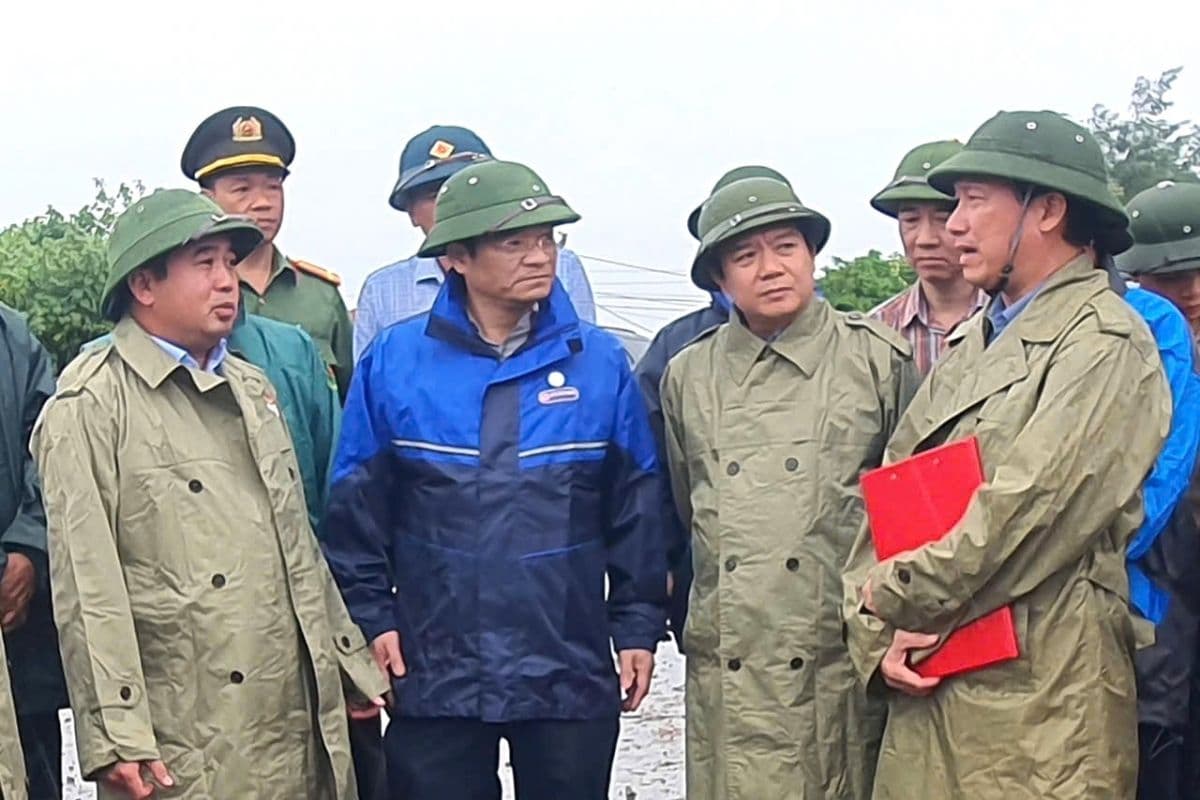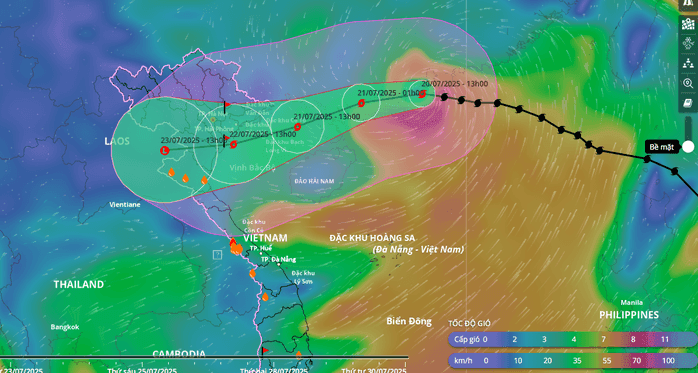Wipha's Deceptive Dance: Unpacking the Enigma of Typhoon No. 3
Unravel Typhoon Wipha's puzzling stall and shifting intensity. Discover the hidden threats of intense rain, flash floods, and Vietnam's agile disaster response.

The Curious Stillness: Wipha's Unprecedented Pause
Typhoon Wipha, designated as Typhoon No. 3 in , has presented meteorologists with a perplexing anomaly: its unexpected, near-stationary period. For a crucial two-hour window, the storm's eye essentially stood still, a behavior that immediately raised questions among experts at the . , the center's director, acknowledged the unusual nature of this pause, noting that while some previous typhoons have exhibited similar tendencies, it often signals a potential shift in direction. However, as of the latest reports, Wipha's path remains under intense scrutiny, with no definitive change in its trajectory yet confirmed by meteorological stations. This stationary phase complicates forecasting efforts significantly, as a stalled storm can prolong the exposure of affected areas to destructive winds and, critically, persistent heavy rainfall. Forecasters are closely monitoring every development, prepared to issue immediate warnings should Wipha's behavior deviate further from predicted patterns, underscoring the dynamic and often unpredictable nature of tropical cyclones.

A Weaker Start, A Stronger Threat: Decoding Wipha's Shifting Power
Adding another layer of complexity to Wipha's profile is its paradoxical strength trajectory. Initially, there was a sense of relief as the typhoon, after making landfall in , reportedly weakened significantly, dropping three levels from its initial Category 12 to Category 9. Furthermore, when it first entered the , its strength was a level lower than initially predicted, registering at Category 9 instead of the anticipated Category 10. Yet, this initial reprieve was short-lived. By early afternoon on July 21st, Wipha began to shift southward and, contrary to the earlier weakening trend, started to re-intensify. Forecasts indicated a worrying possibility of it strengthening further to Category 10-11 with gusts up to Category 14 before making landfall in the southern – northern area. This fluctuating intensity presents a formidable challenge for preparedness, as communities must contend with a storm that seemingly defies a linear progression, demanding constant vigilance and adaptability in response planning.

The Broad Brush of Danger: Beyond the Eye of the Storm
While wind speeds often dominate typhoon narratives, Wipha’s most insidious threat lies in its exceptionally wide circulation and the sheer volume of rain it is poised to unleash. Even before the storm officially entered the , parts of , notably , were already experiencing significant downpours, with rainfall totals reaching 170-200mm by the afternoon of July 20th, accompanied by strong winds. This widespread reach means that areas far from the immediate path of the storm's eye are still highly vulnerable. Coastal regions like and are bracing for sustained strong winds, but the real danger extends inland. The extensive rain bands associated with Wipha are expected to drench vast areas of Northern and North Central , shifting the focus from localized wind damage to the potential for widespread water-related devastation across multiple provinces. This broad impact underscores the critical need to look beyond the immediate eyewall when assessing a typhoon's overall threat.
Forecasting the Deluge: Anticipating Water's Devastating Impact
The true measure of Wipha's destructive potential is in the impending deluge. Meteorological forecasts paint a stark picture for Northern and North Central , predicting widespread heavy rain from the evening of July 21st through the morning of July 22nd. Provinces such as , , southern , , and are identified as the epicenters, anticipating rainfall between 200-350mm, with some localized areas potentially exceeding a staggering 600mm. Other regions across the North and are also expected to receive substantial rainfall, ranging from 100-200mm, with isolated spots reaching over 300mm. Experts are particularly concerned about high-intensity rainfall events, exceeding 150mm within just three hours, which significantly elevates the risk of flash floods and landslides in mountainous terrain, and severe inundation in low-lying and urban areas. The emphasis on these water-related hazards, especially in 50 communes in mountainous , 20 in , and some in , highlights the severe challenge forecasters face in pinpointing precise areas of extreme vulnerability.

Resilience on Alert: Vietnam's Adaptive Response Strategy
In the face of Wipha's unpredictable nature and its widespread rainfall threat, Vietnamese communities and authorities have sprung into action with a robust and adaptive response. Provinces like are diligently implementing the '4-on-the-spot' principle, ensuring local resources, command, forces, and logistics are readily available to minimize damage, especially in critical vulnerable areas. This proactive stance is mirrored across the affected regions; , for instance, even shortened its Provincial People's Council session to fully concentrate on storm prevention efforts. Evacuations have been swift and decisive, with 19 households in high-risk landslide zones being moved to safety. Urban centers like witnessed residents stocking up on essentials, yet markets remained stable, demonstrating effective supply chain management. Local resilience is also evident in places like , where citizens are adopting a decisive 'style' of storm prevention. Furthermore, authorities are paying special attention to the critical timing of high tides coinciding with the storm's potential landfall, a crucial factor that could exacerbate coastal flooding. This comprehensive, multi-faceted approach underscores 's seasoned experience in disaster preparedness, prioritizing human safety and infrastructure protection.
Related Articles

Wipha's Unseen Architect: Decoding the Unusual Forces Behind Vietnam's Looming Deluge

Wipha's Unseen Architect: Decoding the Unusual Forces Behind Vietnam's Looming Deluge

Wipha's Ascent: Navigating the Multi-Faceted Peril Facing Northern Vietnam

Wipha's Ascent: Navigating the Multi-Faceted Peril Facing Northern Vietnam

Decoding the Deluge: How Wipha's Path Unleashes Catastrophic Rains in Northern Vietnam

Decoding the Deluge: How Wipha's Path Unleashes Catastrophic Rains in Northern Vietnam

Wipha's Whirling Warning: How Vietnam Faced an Unpredictable Force
